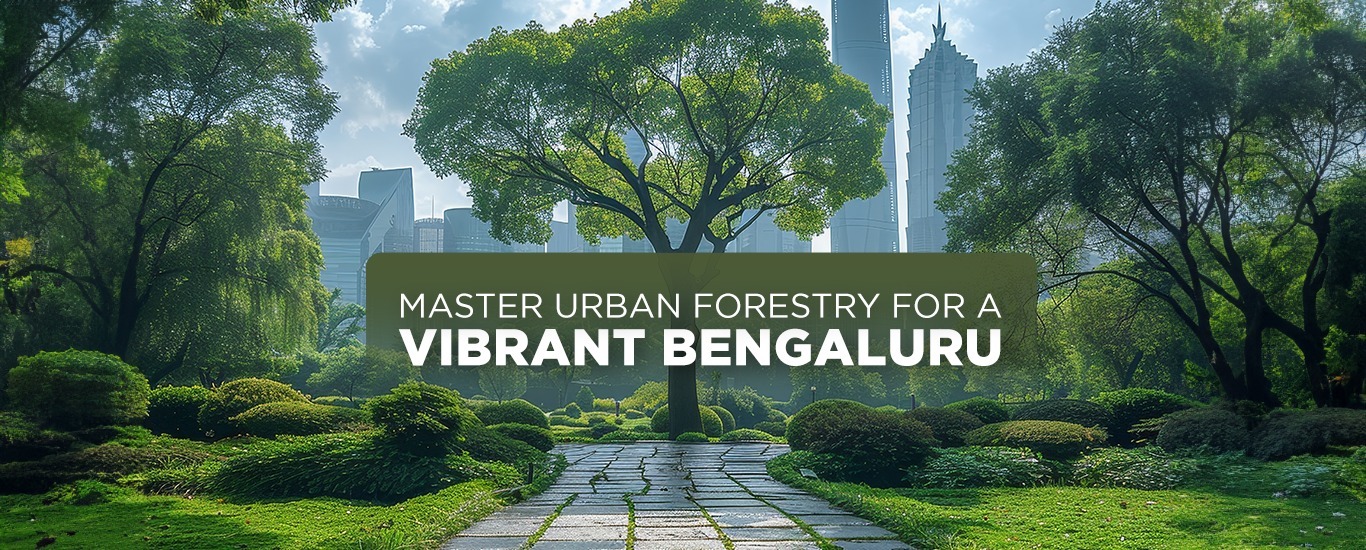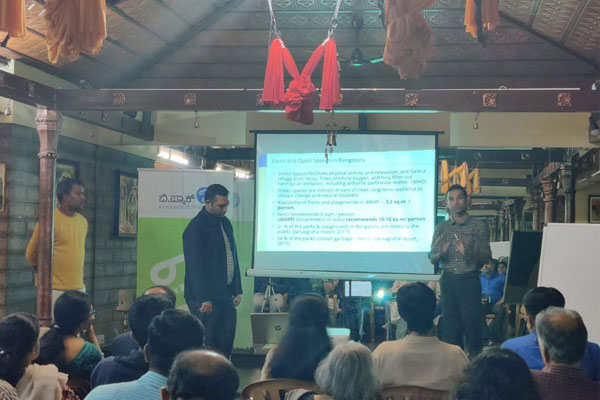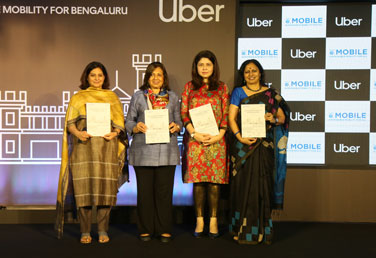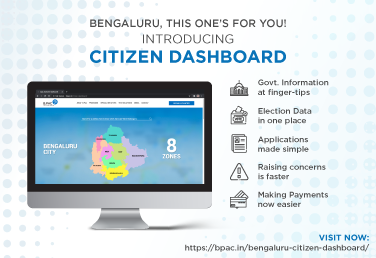The B.PAC Urban Forestry Handbook for Bengaluru
focuses on the planning, planting, protection, and preservation of trees within city landscapes to create healthier and more sustainable urban ecosystems. This practice involves the integration of trees and green spaces into the urban fabric, enhancing the overall quality of life for city dwellers by providing numerous environmental, social, and economic benefits.
Why do we need Urban Forestry?
Urban forestry is essential for several reasons:
- Environmental Benefits: Trees improve air quality by filtering pollutants, reduce the urban heat island effect through shade and transpiration, and aid in stormwater management by absorbing rainwater.
- Social and Health Benefits: Green spaces contribute to mental well-being, reduce stress, and provide areas for recreation and community gatherings.
- Economic Benefits: Well-managed urban forests can increase property values, attract tourism, and reduce energy costs by providing natural cooling.
- Biodiversity: Urban forests support diverse wildlife habitats, promoting biodiversity within city environments.
How Can Urban Forestry Be Implemented?
Effective urban forestry can be achieved through the following strategies:
- Strategic Planning: Developing long-term urban forestry plans that include tree inventories, planting targets, and maintenance schedules.
- Community Involvement: Engaging residents and local organisations in tree planting and care activities to foster a sense of ownership and stewardship.
- Policy and Legislation: Establishing policies and regulations that protect existing trees, mandate tree planting in new developments, and allocate funding for urban forestry programs.
- Education and Awareness: Promoting the benefits of urban forestry through educational campaigns and training programs for professionals and volunteers.
Urban Forestry is particularly common in developing countries where urbanisation is rapidly increasing and demography is changing. Today, as we tackle environmental issues like climate change and global warming, Urban Forestry is emerging as a promising solution to all these concerns. Here are some case studies!
Italy: WOWnature
WOWnature, an innovative initiative powered by Etifor, empowers individuals, companies, and organisations to adopt and plant trees with the dual objective of creating new forests and protecting existing ones. By offering everyone the opportunity to actively contribute to environmental conservation, WOWnature fosters a collective responsibility towards nature. Participants can engage directly in the stewardship of our planet, ensuring that green spaces flourish for future generations. The initiative commits to nurture the natural world while promoting the myriad benefits that healthy ecosystems provide to human well-being. It designs, funds, manages, and implements participative reforestation, forest restoration, forest improvement, or tree-planting projects in Italy and all around the world.

Who benefits from WOWnature’s activities?
- Private or public landowners/forest managers that want to make ecological improvements.
- Citizens that want to adopt or plant trees themselves.
- Companies and other organisations that want to:
- Implement their corporate social responsibility (CSR) or improve their reputation
- Achieve their climate-related goals
- Public administrations that seek ecological improvements and increased ecosystem services in specific natural areas.
- Environmental NGOs that need partners to fulfil their missions.
WOWnature Annual Goals:
- Increasing adopted trees (new trees and existing ones)
- Increasing project areas in every continent
- Increasing public tree-planting events.
- Increasing tree-planting events participants and website users
- Increasing partner organisations
- Increasing media mentions and social media followers
Spain: The Pla Natura Barcelona
The Pla Natura Barcelona (Barcelona Nature Plan) is a 10-year public initiative by the Barcelona City Council to enhance green spaces and biodiversity in the city by 2030. Following the 2020 Barcelona Climate Emergency Declaration, it focuses on three key areas: conservation, expansion, and promoting the value of green spaces and biodiversity. The plan also emphasises the importance of knowledge and governance in achieving its goals.

The Pla Natura Barcelona Goals:
- Increase green infrastructure to maximise services related to climate change adaptation and citizen access to urban nature.
- Conserve and foster biodiversity by protecting species, improving habitats.
- Activate the ecological management of resources, natural heritage and the green urban areas with citizen and biodiversity health in mind.
- Increase knowledge, enjoyment, and protection of urban nature, and promote citizen engagement in nature conservation.
Who benefits from Pla Natura Barcelona’s activities?
- Barcelona’s citizens:
- Those sporadically participate in nature activities and sessions.
- Those with a strong commitment to urban nature.
- Over 1000 organisations that have signed the Barcelona + sostenible agreement
England: Bankside Urban Forest
Initiated in 2008, the Bankside Urban Forest is a long-term strategy to incorporate forest ecology principles into one of London's oldest areas, enhancing public spaces for people and wildlife and increasing neighbourhood resilience and greenery. The project involves designing and executing various temporary and permanent projects to transform streets into pedestrian-friendly, green communal areas that encourage social interaction, and it also promotes tree-planting days on housing estates.

Who benefits from Bankside Urban Forest’s activities?
- Local businesses and major developers that fund projects, because the market is driving developers to look at demands of end-users for more sustainable buildings and surrounding landscapes.
- Local residents, business workers and tourists, that enjoy a better, healthier and resilient environment.
- The green-economy workforce, that finds new jobs in the urban horticultural and forestry sector.
Bankside Urban Forest Goals
- Improving Bankside for everybody through urban forestry and habitat conservation
- Integrating new developments into the existing fabric, making sure these deliver both commercial and environmental benefits
The B.PAC Urban Forestry Handbook for Bengaluru
Urban greening is one of the most affordable and impactful strategies to tackle urban sustainability challenges. Imagine a city where climate change is mitigated through lush green spaces absorbing carbon, and where citizens' health and safety are enhanced by inviting outdoor environments. Sounds ideal, right? However, in Bengaluru, green spaces have dwindled to just 3% over the past 50 years. To achieve a healthy and sustainable environment, we need at least 30% green cover.
Now, as we prepare for the monsoon tree-planting season, it’s crucial to get it right. How can we ensure our efforts are successful? By planting the right species in the right places and maintaining them properly. This is where B.PAC’s Urban Forestry Handbook for Bengaluru comes in. Whether you’re planning to green a narrow street or a large field, this comprehensive guide provides detailed advice on the best species and practices for different urban contexts.
Did you know there are 126 tree species identified in the handbook? They’re categorised for use in dense urban areas to expansive open spaces, ensuring that every tree planted serves Bengaluru effectively for decades to come. B.PAC has been spearheading Urban Forestry social media campaigns to raise awareness about the importance of green spaces. Follow us on Twitter and Instagram - @BPACofficial to stay informed and get involved!
Ready to make a difference? Let’s make this planting season the beginning of a greener, healthier, and more resilient Bengaluru. Join us in transforming our city—one tree at a time!
B.PAC related news, events, activities & stories.













